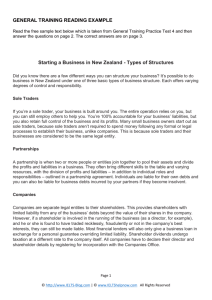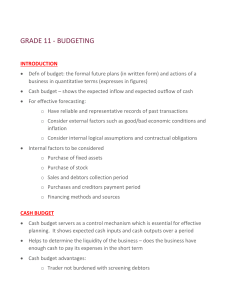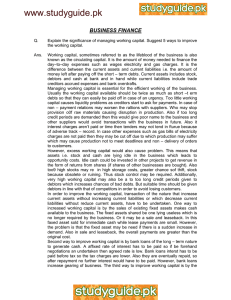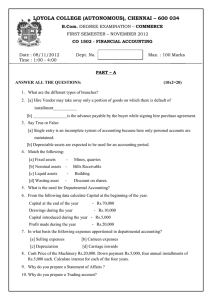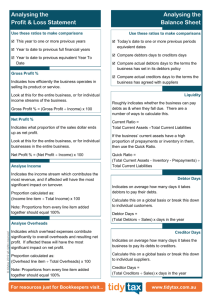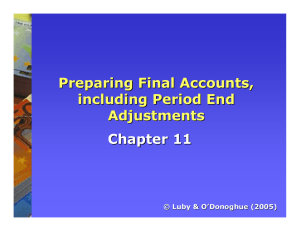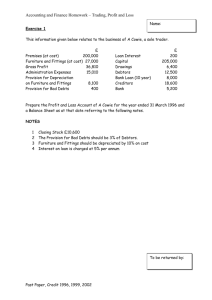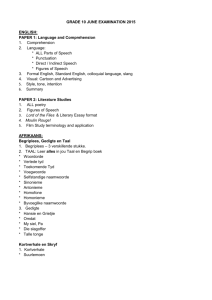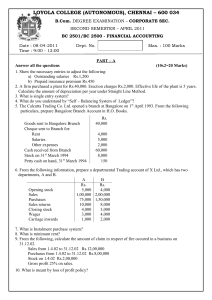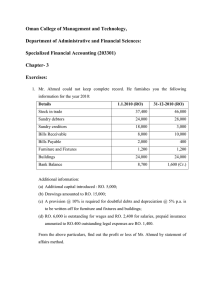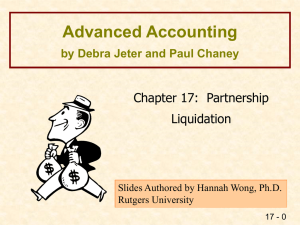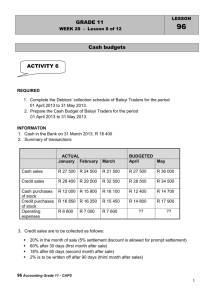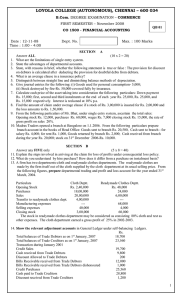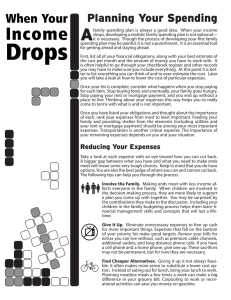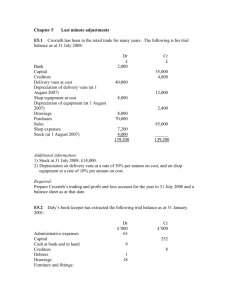examination
advertisement
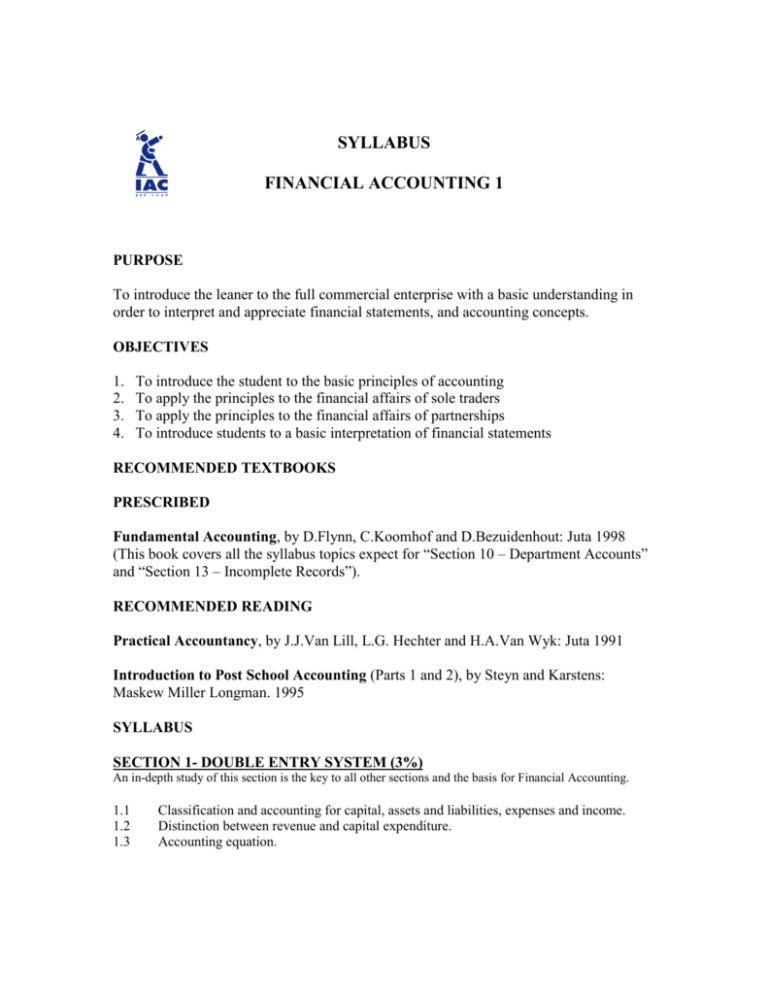
SYLLABUS FINANCIAL ACCOUNTING 1 PURPOSE To introduce the leaner to the full commercial enterprise with a basic understanding in order to interpret and appreciate financial statements, and accounting concepts. OBJECTIVES 1. 2. 3. 4. To introduce the student to the basic principles of accounting To apply the principles to the financial affairs of sole traders To apply the principles to the financial affairs of partnerships To introduce students to a basic interpretation of financial statements RECOMMENDED TEXTBOOKS PRESCRIBED Fundamental Accounting, by D.Flynn, C.Koomhof and D.Bezuidenhout: Juta 1998 (This book covers all the syllabus topics expect for “Section 10 – Department Accounts” and “Section 13 – Incomplete Records”). RECOMMENDED READING Practical Accountancy, by J.J.Van Lill, L.G. Hechter and H.A.Van Wyk: Juta 1991 Introduction to Post School Accounting (Parts 1 and 2), by Steyn and Karstens: Maskew Miller Longman. 1995 SYLLABUS SECTION 1- DOUBLE ENTRY SYSTEM (3%) An in-depth study of this section is the key to all other sections and the basis for Financial Accounting. 1.1 1.2 1.3 Classification and accounting for capital, assets and liabilities, expenses and income. Distinction between revenue and capital expenditure. Accounting equation. SECTION 2 – BOOKS OF ORIGINAL ENTRY (3%) A general knowledge rather than an in-depth study of the section is required 2.1 2.2 2.3 Recording repetitive transaction in the books/journals of prime entry. Posting to the final record – the ledger. Extraction of a trial balance. SECTION 3 – CONCEPTS (5%) A thorough knowledge of the different concepts is required. 3.1 3.2 The going concern concept. The matching concept. Revenue and expenditure. Accounting for assets, liabilities, revenue and expenses in proper Accounting period Accruals and Prepayments 3.3 3.4 The consistency concept The prudence concept SECTION 4-FINANCIAL STATEMENTS (20%) Sole Traders; Partnership and Associations NOT for gain, e.g. Clubs 4.1 4.2 4.3 4.4 4.5 Trading Accounts Receipts and payments accounts Income statements Balance sheets. Closing entries and adjustments at the end of period SECTION 5 – VALUATION OF ACCOUNTS (9%) 5.1 5.2 5.3 Stock valuation – FIFO, LIFO and the weighted average method, cost and net realizable value. Depreciation – straight line, reducing balance, revaluation and sum of digits method. (Including treatment on disposal; of fixed assets). Bad debts, bad debts recovered, provisions for doubtful debts and discount. . SECTION 6 – RECONCILIATIONS (10%) 6.1 6.2 6.3 Bank (Reconciliation with bank statement). Creditors (Reconciliation with creditors statement). Suspense Accounts. SECTION 7 – CONTROL ACCOUNTS (7%) Writing up and reconciling debtors and control accounts, agreements with debtors and creditors ledgers. SECTION 8 – CORRECTION OF ERRORS (4%) Adjustments in respect of errors of: 8.1 8.2 8.3 8.4 Principle Omission Commission and Original entry Compensating errors SECTION 9 – MANUFACTURING ACCOUNTS (COST OF PRODUCTION STATEMENTS) (5%) Note: Recommended move to Financial Accounting 2. Presentation of manufacturing statements, elements of costs, stock valuation, unit costs, mark –up percentage, gross profit percentage, work in progress, sales of raw materials, proper allocation of expenses. SECTION 10 – DEPARTMENT ACCOUNTS (5%) 10.1 10.2 10.3 Presentation of department income statements. Inter-departmental transfers. Allocation of expenses. SECTION 11 – PARTNERSHIP (ELEMENTARY) (12%) 11.1 11.2 11.3 11.4 11.5 Appropriation accounts. Interest on capital and drawings. Salaries paid to partners. Profit sharing. Fixed and fluctuating capital accounts, current accounts. SECTION 12 – INTERPRETATION OF ACCOUNTS (9%) 12.1 12.2 12.3 12.4 12.5 Computation of significant ratios Elementary cash flow statements in respect of sole traders. (recommended move to Financial Accounting 2) Capital introduction, profit, drawings loans raised, and repaid. Increase and decrease in working capital. Treatment of purchase and disposal of assets. SECTION 13 – INCOMPLETE RECORDS (8%) Preparation of accounts from incomplete records of single entry. EXAMINATION The emphasis of the examination will be on the practical application of financial accounting rather than the theoretical. Students will be expected to answer all questions, as choices/alternative questions will not be given. (Multiple-choice questions are rarely set and would in any event not exceed twenty percent of the marks). Students are allowed to use non-programmable battery-powered calculators, but are reminded that it is essential to show intermediate workings.
